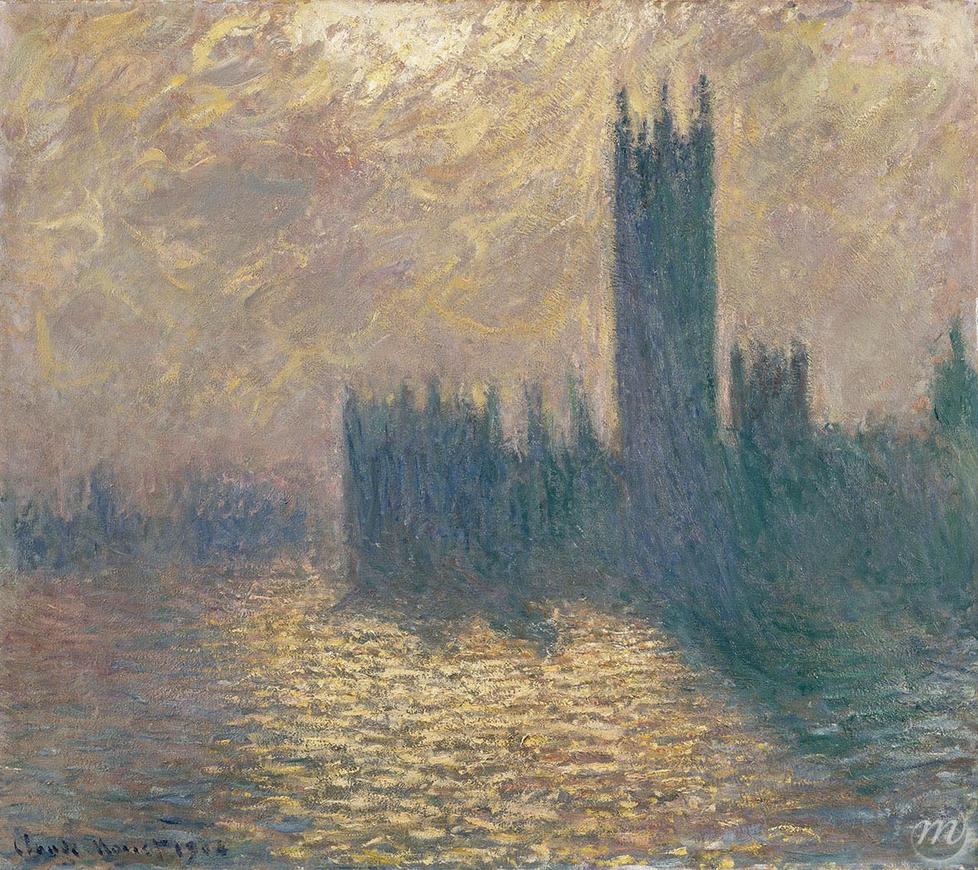So, where have the Houses of Parliament gone? We might well ask! The building in question is merely a bodiless, phantasmagorical, blurred silhouette, barely distinguishable from its reflection in the water. The more you look at it, the more it seems to distort. The lack of separation between the sky and the water helps to dissolve the forms and outlines completely.
Monet's patented technique of fragmenting and juxtaposing splashes of colour enabled him to express all the variations in the effects of the light. The canvas ripples like the surface of water. The palette is relatively restrained, made up of blue, yellow and shades of purplish pink.
The density of the famous London fog places a little more distance between the viewer and reality to immerse us in the painting. This very distinctive atmosphere did not make the artist's job easy. He wrote to Durand-Ruel, a dealer in Paris: "I work solidly, I burn with passion, but it is so difficult, so variable above all else, that I am having a devil of a job achieving what I hoped to."
This painting echoes another which constituted a milestone in the history of art because it gave its name to the Impressionist movement: Impression, Sunrise, painted by Monet in 1873.
The painter's attention was drawn by the light of the late afternoon or sunset during his various sessions spent observing the Houses of Parliament, hence the golden reflections and the orangey light.
Inv. P 1734

So, where have the Houses of Parliament gone? We might well ask! The building in question is merely a bodiless, phantasmagorical, blurred silhouette, barely distinguishable from its reflection in the water. The more you look at it, the more it seems to distort. The lack of separation between the sky and the water helps to dissolve the forms and outlines completely.
Monet's patented technique of fragmenting and juxtaposing splashes of colour enabled him to express all the variations in the effects of the light. The canvas ripples like the surface of water. The palette is relatively restrained, made up of blue, yellow and shades of purplish pink.
The density of the famous London fog places a little more distance between the viewer and reality to immerse us in the painting. This very distinctive atmosphere did not make the artist's job easy. He wrote to Durand-Ruel, a dealer in Paris: "I work solidly, I burn with passion, but it is so difficult, so variable above all else, that I am having a devil of a job achieving what I hoped to."
This painting echoes another which constituted a milestone in the history of art because it gave its name to the Impressionist movement: Impression, Sunrise, painted by Monet in 1873.
The painter's attention was drawn by the light of the late afternoon or sunset during his various sessions spent observing the Houses of Parliament, hence the golden reflections and the orangey light.
Inv. P 1734